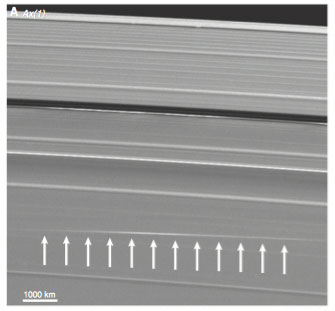Solar System Research
One focus of research are small particles found in the environment of the planets of the solar system (circumplanetary dust). These particles are usually smaller than one millimeter, often only a thousandth or a millionth of millimeter in size. Such particles are widely distributed in the Solar system, often forming ring systems around the gas giants. The grains can be created in a number of different processes. What makes them interesting to study is that they bear information from their points of origin, like the surfaces or even the interiors of the moons of the giant planets. Also, because their motion is affected by the environment of the giant planets, like the presence of magnetic fields or ions and neutral gas, we can learn about this environment from analysing the paths that these particles have taken. Another motivation for the study of dust around the planets is spacecraft hazard: Impacts of larger particles tend to degrade the hardware of spacecraft and in extreme cases may lead to fatal damage.
One example for dust research in Oulu is the Saturnian moon Enceladus (500km diameter).
The CASSINI (NASA/ESA) mission to Saturn
has discovered that Enceladus is active, expelling a plume of water vapor and tiny water ice particle from a system of cracks
in the ice crust of the moon around its south pole.
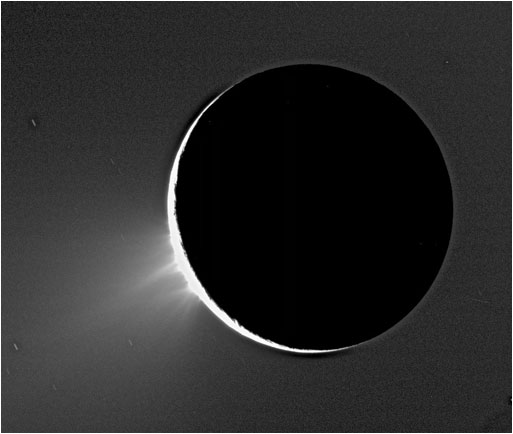
Credit: NASA/ESA/JPL
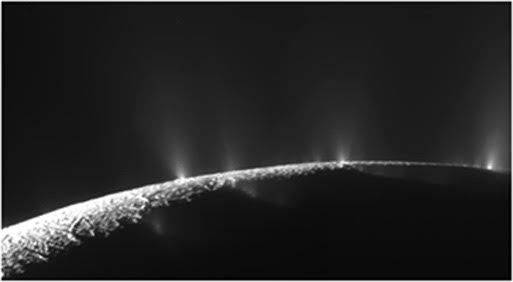
Credit: NASA/ESA/JPL
The instruments of the CASSINI spacecraft, which is at Saturn until late 2017, have studied Enceladus and its activity in detail. The group in Oulu is involved directly in the science team of the Cosmic Dust Analyzer instrument, which is a detector especially designed for the study of circumplanetary dust. The work characterized the number and sized of the ice grains (Schmidt et al, 2008, Nature), but also their chemical composition ( Postberg et al, 2009, Postberg et al, 2011, Nature). This compositional information provided strong evidence that Enceladus harbors a reservoir of liquid water under its surface and the presence of a subsurface ocean was confirmed later by other CASSINI instruments. Further compositional analysis carried out by the Cosmic Dust Analyzer team led to the conclusion on ongoing hydrothermal activity inside Enceladus ( Hsu et al, 2015, Nature), possibly in a similar manner as it happens in some places in the deep sea on Earth. This finding bears strong implications for the habitability and the astrobiological potential of the small icy moon Enceladus.
Another example for dust research in Oulu is the ESA funded project "Meteoroid Environment Model for the Jovian System" to assess
the dust hazard for
ESA's future mission JUICE (JUpiter ICy moons Explorer).
In the Jupiter system dust particles are created when fast micro-meteoroids hit the surfaces of the numerous atmosphereless
moons of Jupiter. These frequent impacts create small craters and part of the excavated
material is ejected into space. Such particles populate then the space around the path of their parent moon and they become
visible as a dust ring in images taken at special geometries.
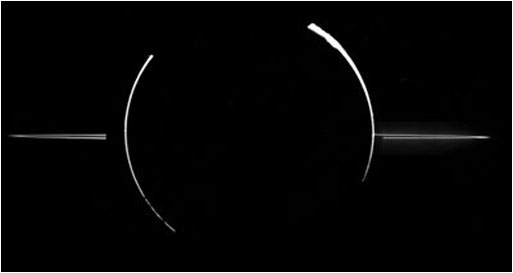
Credit: NASA/ESA/JPL
The group in Oulu built a computer model of the Jovian micro-meteoroid environment. It was found that small dust particles form an egg-shaped ring that points towards the Sun, while larger particles form an egg-shaped ring that points away from the Sun (Liu et al, 2016, Journal of Geophysical Research). Some of the particles can slowly change their plane of revolution around Jupiter, so that they eventually revolve even backward around the planet. Part of our research results was covered as a story on the page of the American Geophysical Union (AGU).
We also took part in the investigation of the dust environment of Earth's moon. The analysis of data obtained by the Lunar Dust Experiment (LDEX), onboard the Lunar Atmosphere and Dust Environment Explorer (LADEE) led to the detection of a permanent but variable dust cloud around the moon (Horanyi et al, 2015, Nature).
Another focus of the planetary science group in Oulu are the rings of Saturn. The rings have attracted the attention of prominent researchers and amateur observers in the last three and a half centuries. Today it is known that they consist of a large number of water ice boulders of 10cm to 10m in size. They were discovered by Galileo Galilei and Huygens, Lagrange, Maxwell, and Henon have studied them. One motivation to do so is certainly the spectacular appearance of the Saturnian ring system and the surprising richness of structure and dynamics that it exhibits.
Today we are also interested in understanding the rings because they allow to directly observe processes that were at work in a very similar manner in the early days of the solar system, when the planets formed in a disk around the young Sun.
One example of research is the study of waves that are forming in the rings, manifesting themselves as ripples seen in images and other
data taken from spacecraft.
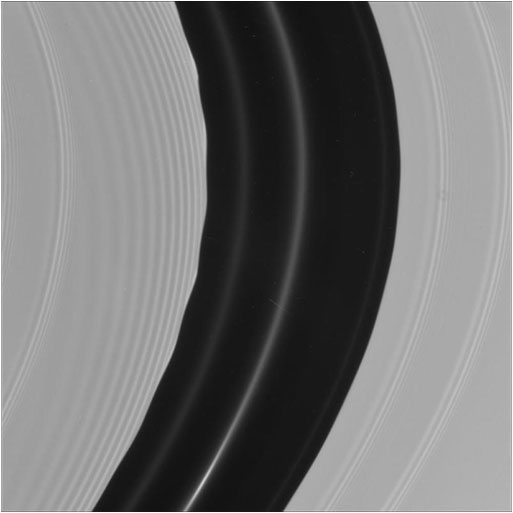
Credit: NASA/ESA/JPL
One sort of waves emerges spontaneously from the motion of the ring matter around the planet, in a similar manner as certain waves are excited on the Earth's oceans by winds. Another type of waves is created at certain locations in the rings as a response to the periodically recurring gravitational attraction of Saturnian moons, revolving outside or inside the ring system. Recent work carried out in the group in Oulu (Schmidt et al, 2016, Lehmann et al, 2016, Astrophysical Journal) addressed the way that these waves damp out when propagating away from the location where they are launched.Other work, carried out in Oulu in the field of planetary rings, is the investigation of how the distribution of particle sizes has established
(Brilliantov et al., Proceedings of the National Academy of Sciences, 2015) and how impacts of meteoroids on the rings shatter ring particles,
leading to the observation of clouds of shattered material that spreads over the rings
(Tiscareno et al, 2013, Science).
